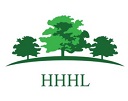



Thetford Forest covers some 47,000 acres (19,000 ha) straddling the county borders of Norfolk and Suffolk. Thetford Forest was planted in the twentieth century to replace the timber-stock depleted during the First World War. It is managed by Forestry England as part of the Public Forest Estate and is the largest man-made forest in low-land England.
The extensive planting of conifers on the heaths and poorest agricultural land in Breckland destroyed many of the open habitats favoured by plants that only grow in the semi-continental climatic conditions of this corner of East Anglia. However, fire rides, so necessary for the successful forestry operations of thinning and harvesting, created an environment capable of sustaining isolated colonies of the rare Breckland flora. Indeed, in many cases Thetford Forest is the only location where many of these Red Data Book species may be found in Great Britain. Such plants are protected from picking, uprooting, destruction and sale by the Wildlife and Countryside Act 1981.
The importance of the Thetford Forest in ensuring the survival of these species is underlined by the Special Site of Scientific Interest (SSSI) status of the forest. Thetford Forest is also protected by EC Directive (92/43/EEC) on the Conservation of Natural Habitats and of Wild Fauna and Flora; the UK Government Directives Conservation (Natural Habitats, etc.) Regulations 1994, and Conservation of Habitats and Species Regulations 2010. The forest has the status of a Designated Special Area of Conservation (SAC).
The majority of the rarer Breckland species of flora require open, cropped grasslands to survive. Forestry England cuts the fire rides between the grassy verges and the conifer plantations regularly. At some locations the verges have been widened to the benefit of the flora. These management practices give space and air for many of the smallest, and rarest, of Breckland plants to germinate and thrive. The planting, thinning and harvesting of timber creates extensive ground disturbance allowing other more common Breckland species such as Viper's Bugloss (Echium vulgare) to colonize these areas. This ground disturbance is replicated on verges beside some rides to encourage plants that require bare earth to germinate.
Forestry England, in conjunction with Natural England, Plantlife, Norfolk and Suffolk Wildlife Trusts and other environmental bodies, are restoring areas of open heathland once the timber is harvested. These restored Breckland heaths benefit rare birds and insects as well as the flora. Regular surveying of forest sites help record the exact location and number of rare plant colonies so allowing Forestry England to create action plans for their protection during forestry operations.
Sensitive sites where the rarest of plants survive are secured, and are rarely open to the general public. Details of when public access is permitted are advertised through posters, websites and other media.
Species of unique Breckland flora are not always easy for the casual observer to find. The majority of these plants are insignificant in size, un-flamboyant in colour, often similar to their more common relatives, and are only found at a very few sites in Thetford Forest. The flora atlases, listed at the end of this text, give the best indication of locations.
| Common Name | Scientific Latin Name | Flowering Season |
|---|---|---|
| Alyssum alyssoides | Small Alison | May - September |
| Alyssum alyssoides | Small Alison | May - September |
| Arabis glabra | Tower Mustard | May - August |
| Asteraceae | Field Wormwood | August - September |
| Filago lutescens | Red-tipped Cudweed | July - November |
| Gallium parisiense | Wall Bedstraw | June - July |
| Herniaria glabra | Smooth Rupturewort | July |
| Hypochaeris glabra | Smooth Cat's-ear | June - September |
| Hypochaeris maculate | Spotted Cat's-ear | June - August |
| Medicago minima | Bur Medick | April - July |
| Medicago sativa ssp.falcata | Sickle Medick | June - July |
| Minuartia hybrid | Fine-leaved Sandwort | May - June |
| Petrorhagia prolifera | Proliferous Pink | May - September |
| Dianthus deltoids | Maiden Pink | June - September |
| Muscari neglectum | Grape-hyacinth | April - May |
| Scleranthus annuus | Annual Knawel | May - October |
| Scieranthus perrenis ssp.prostratus | Perennial Knawel | June - August |
| Silene conica | Sand Catchfly | May - August |
| Silene otitis | Spanish Catchfly | June - September |
| Thymus serpullum | Breckland Thyme | May - September |
| Veronica spicata | Spiked Speedwell | July - October |
| Veronica verna | Spring Speedwell | March - April |
| Veronica prasecox | Breckland Speedwell | March - April |
| Veronica triphyllos | Fingered Speedwell | March - April |